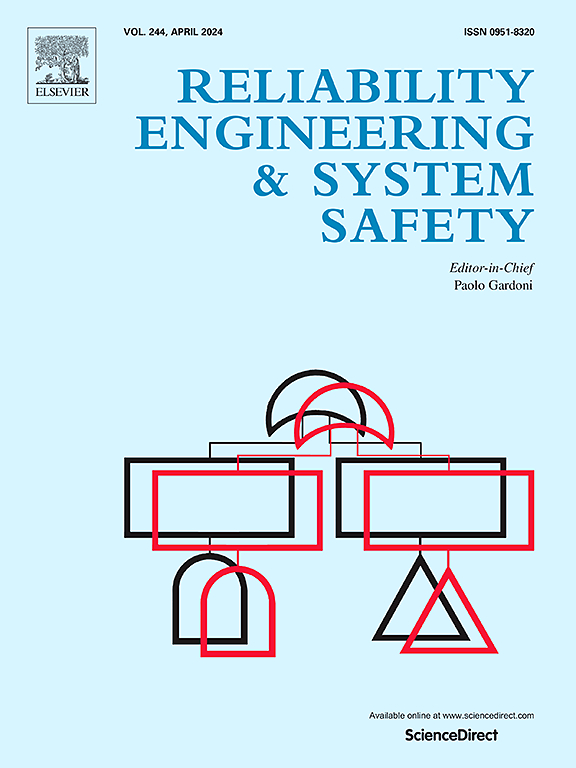Integrated multi-agent-based outpatient building fire response modeling for risk-driven resource use and retrofitting strategies: A case study
IF 9.4
1区 工程技术
Q1 ENGINEERING, INDUSTRIAL
引用次数: 0
Abstract
To evaluate and optimize the evacuation capability of an outpatient building from a risk-driven perspective, a multi-agent-based modeling framework for emergency response that integrates the processes of fire evolution, emergency evacuation and rescue was developed. Then explored evacuation capacity optimization strategies from the perspectives of resource use and building retrofitting. To verify the effectiveness and applicability of the method, an evacuation model that simulates a fire in the outpatient building was developed. It was found that few occupants with restricted mobility took up the most evacuation time, need to improve the vertical mobility of these occupants; To prevent unplanned evacuation network interruptions due to fire, stairwell availability needs to be protected; The use of elevators for evacuation needs to be centralized to speed up the evacuation. The results of the current study will help public emergency authorities develop an effective plan for optimizing the emergency response system in outpatient buildings.
求助全文
约1分钟内获得全文
求助全文
来源期刊

Reliability Engineering & System Safety
管理科学-工程:工业
CiteScore
15.20
自引率
39.50%
发文量
621
审稿时长
67 days
期刊介绍:
Elsevier publishes Reliability Engineering & System Safety in association with the European Safety and Reliability Association and the Safety Engineering and Risk Analysis Division. The international journal is devoted to developing and applying methods to enhance the safety and reliability of complex technological systems, like nuclear power plants, chemical plants, hazardous waste facilities, space systems, offshore and maritime systems, transportation systems, constructed infrastructure, and manufacturing plants. The journal normally publishes only articles that involve the analysis of substantive problems related to the reliability of complex systems or present techniques and/or theoretical results that have a discernable relationship to the solution of such problems. An important aim is to balance academic material and practical applications.
 求助内容:
求助内容: 应助结果提醒方式:
应助结果提醒方式:


